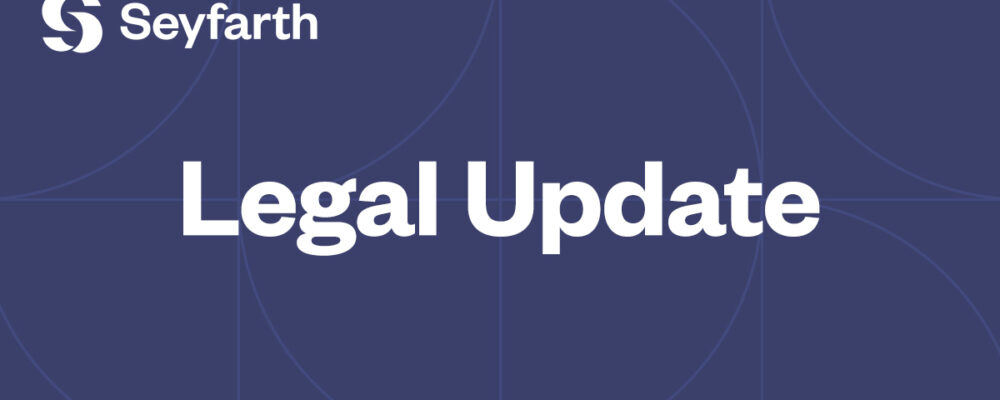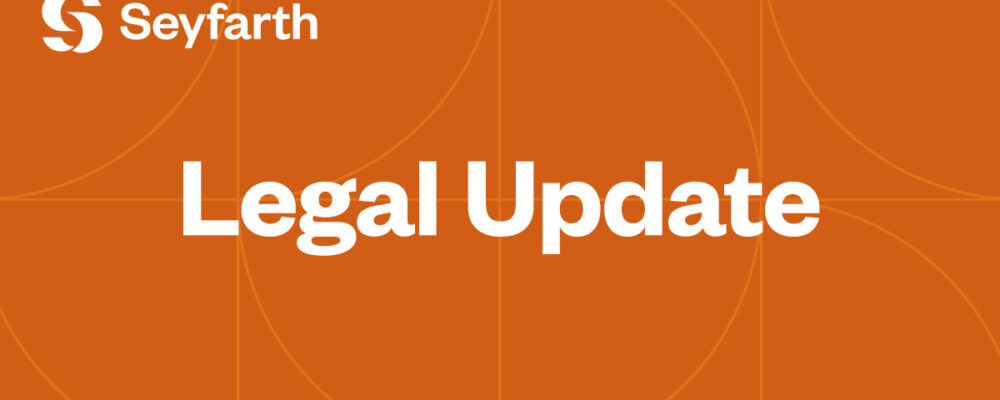Earlier this year, we reported that the Illinois Senate passed Senate Bill 2979 with a vote of 46 to 13, and the Illinois House of Representatives passed Senate Bill 2979 with a vote 81 to 30. This bill addressed concerns arising from recent legal interpretations of the Illinois Biometric Information Privacy Act (“BIPA,” 740 ILCS 14/ et seq.), particularly following the Illinois Supreme Court’s 2023 decision in Cothron v. White Castle System Inc., in which the Court held that a claim under BIPA accrues each time that an individual’s biometric information or identifier is captured or collected.
Last Friday, after nearly a three-month wait, Governor J.B. Pritzker signed Senate Bill 2979 into law. This marks the first ever amendment to BIPA in its 16-year history.
Before the amendment, BIPA allowed aggrieved individuals to claim $1,000 or actual damages for “each” negligent violation, and $5,000 or actual damages for “each” reckless or intentional violation. In Cothron, the Court held that “each” violation under the statute is a separate claim, which led some plaintiffs’ attorneys to pursue a “per scan” damages theory whereby plaintiffs would purport to seek $1,000 or $5,000 for each scan of their biometric information or identifiers. Recognizing the potential for excessive statutory damages under this theory, the Court urged the Illinois legislature to take action, and the legislature responded with this significant amendment.
The amendment, which took effect on August 2, 2024, provides that an aggrieved person may recover for only one statutory violation under Sections 15(b) and 15(d). Specifically, the changes to BIPA’s damages provisions are as follows:
(b) For purposes of subsection (b) of Section 15, a private entity that, in more than one instance, collects, captures, purchases, receives through trade, or otherwise obtains the same biometric identifier or biometric information from the same person using the same method of collection in violation of subsection (b) of Section 15 has committed a single violation of subsection (b) of Section 15 for which the aggrieved person is entitled to, at most, one recovery under this Section.
(c) For purposes of subsection (d) of Section 15, a private entity that, in more than one instance, discloses, rediscloses, or otherwise disseminates the same biometric identifier or biometric information from the same person to the same recipient using the same method of collection in violation of subsection (d) of Section 15 has committed a single violation of subsection (d) of Section 15 for which the aggrieved person is entitled to, at most, one recovery under this Section regardless of the number of times the private entity disclosed, redisclosed, or otherwise disseminated the same biometric identifier or biometric information of the same person to the same recipient.
740 ILCS 14/25(b) and (c).
Notably, as amended, BIPA further suggests now that an aggrieved person cannot recover separate statutory amounts for violations of Section 15(b) and Section 15(d). Instead, each amendment explicitly states that an aggrieved individual is entitled to “a single violation … of Section 15 for which the aggrieved individual is entitled to, at most, one recovery under this Section …” Id. (emphasis added). In other words, although the amendment acknowledges that Section 15 includes subsections 15(b) and 15(d) as distinct subsections, its language nonetheless could be read to state that an individual may only recover for a single violation of Section 15 as a whole, regardless of which subsection is violated.
The amendment also expressly includes an “electronic signature” as a permissible means of a “written release,” as defined under the statute. Prior to this amendment, it was unclear whether an electronic signature was a proper means for affixing signature under the statute. Although electronic signatures to BIPA releases were not subject to frequent challenges by the plaintiffs’ bar, this aspect of the amendment provides additional clarity that should be welcome to Illinois employers and other businesses.
While the amendment is unlikely to halt BIPA filings entirely, they will mitigate the weaponization by some plaintiffs’ attorneys who viewed Cothron as their green light to pursue a per-scan damages theory, which could have exposed Illinois businesses to tens or even hundreds of millions of dollars in damages for even the smallest of putative classes. Until now, businesses were left to rely on the discretion of trial and appellate courts to keep this theory in check; with the amendment, the statute accomplishes that unequivocally. The amendment also prevents plaintiffs from seeking separate damages for each subsection under Section 15, thereby rebuffing another tactic for increasing damages that other plaintiffs’ counsel attempted to utilize in the alternative.
If you have any questions about how this BIPA amendment may impact your business practices, please do not hesitate to contact the authors or your trusted Seyfarth Shaw advisor.
“With approximately 900 lawyers across 17 offices, Seyfarth Shaw LLP provides advisory, litigation, and transactional legal services to clients worldwide.”
Please visit the firm link to site





